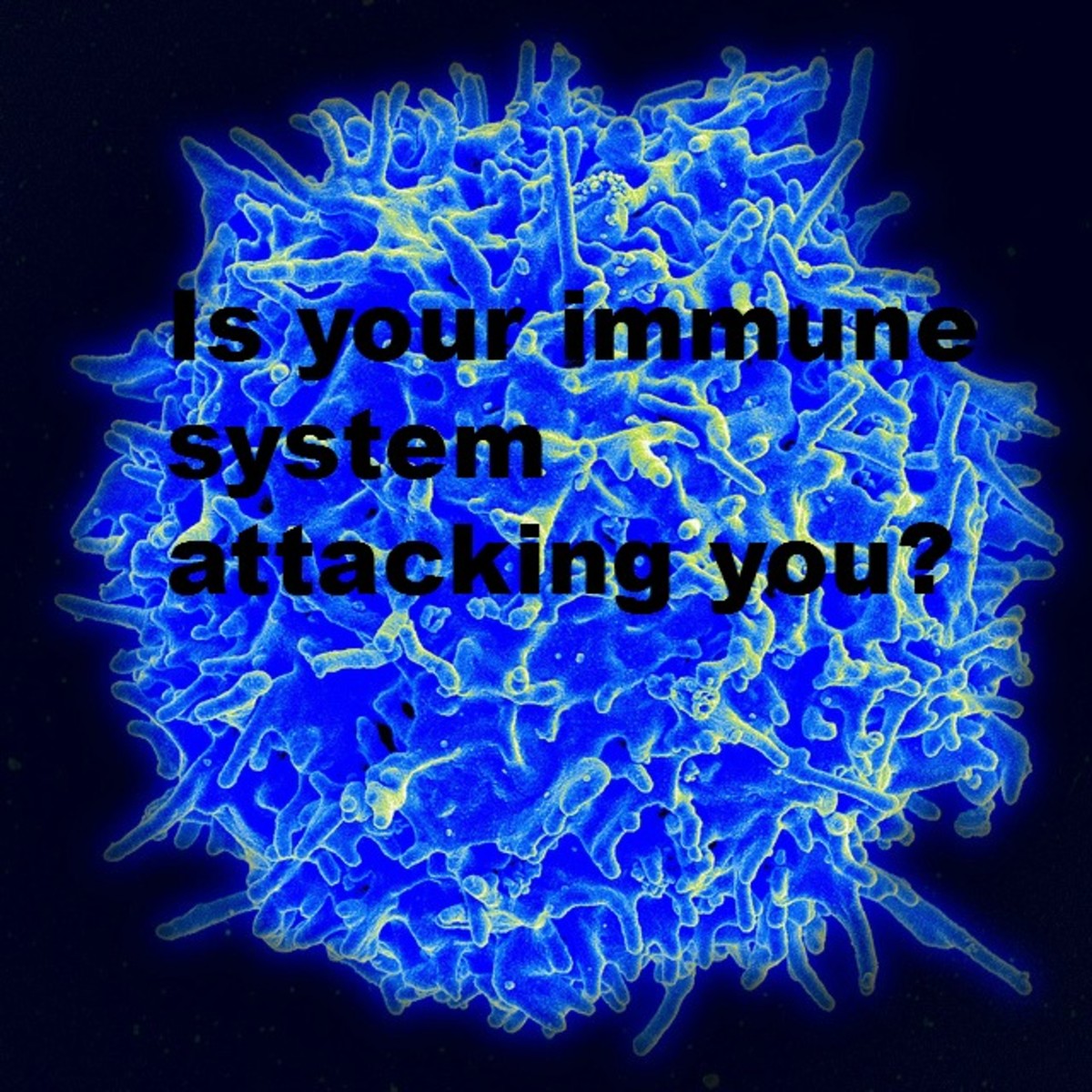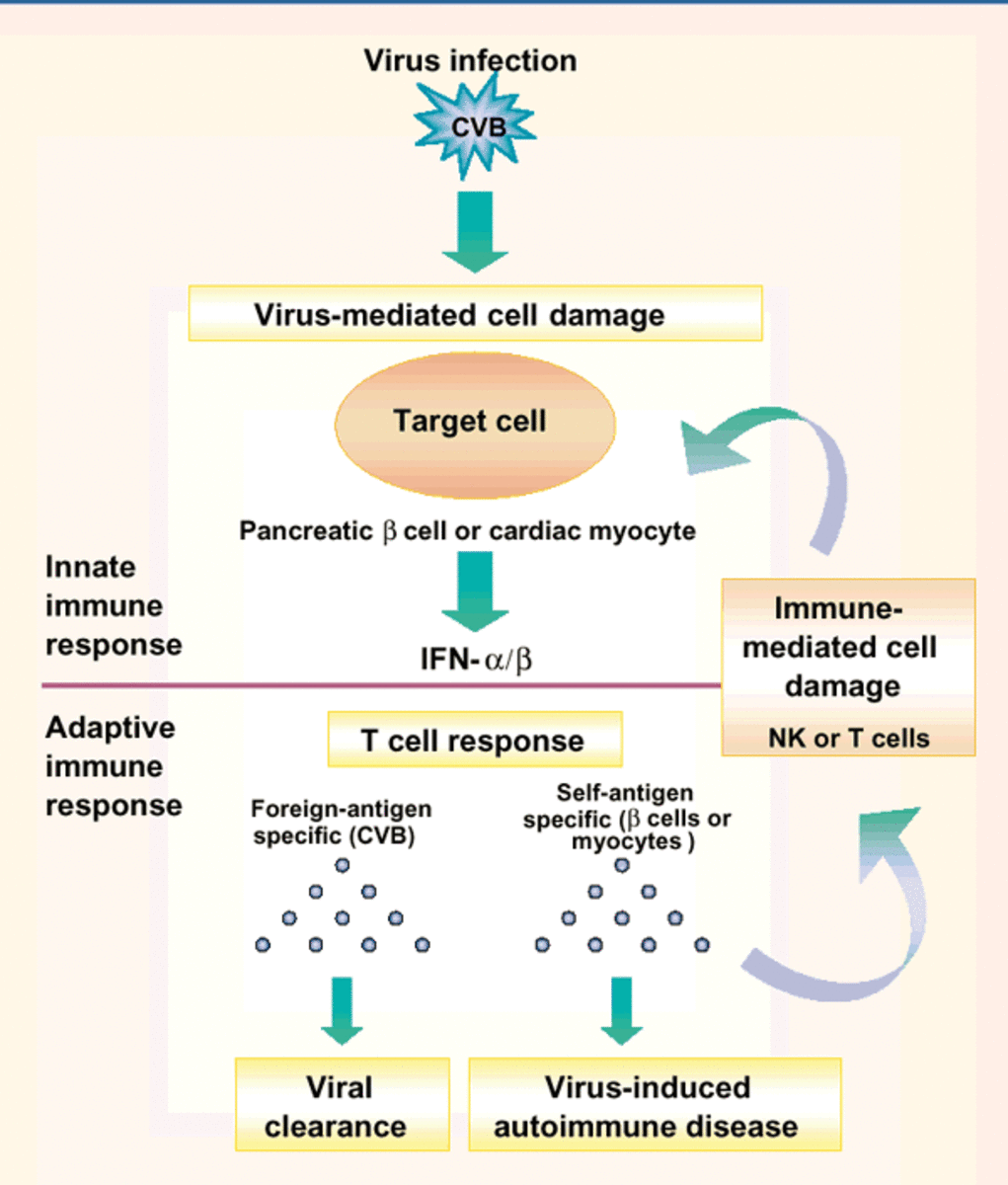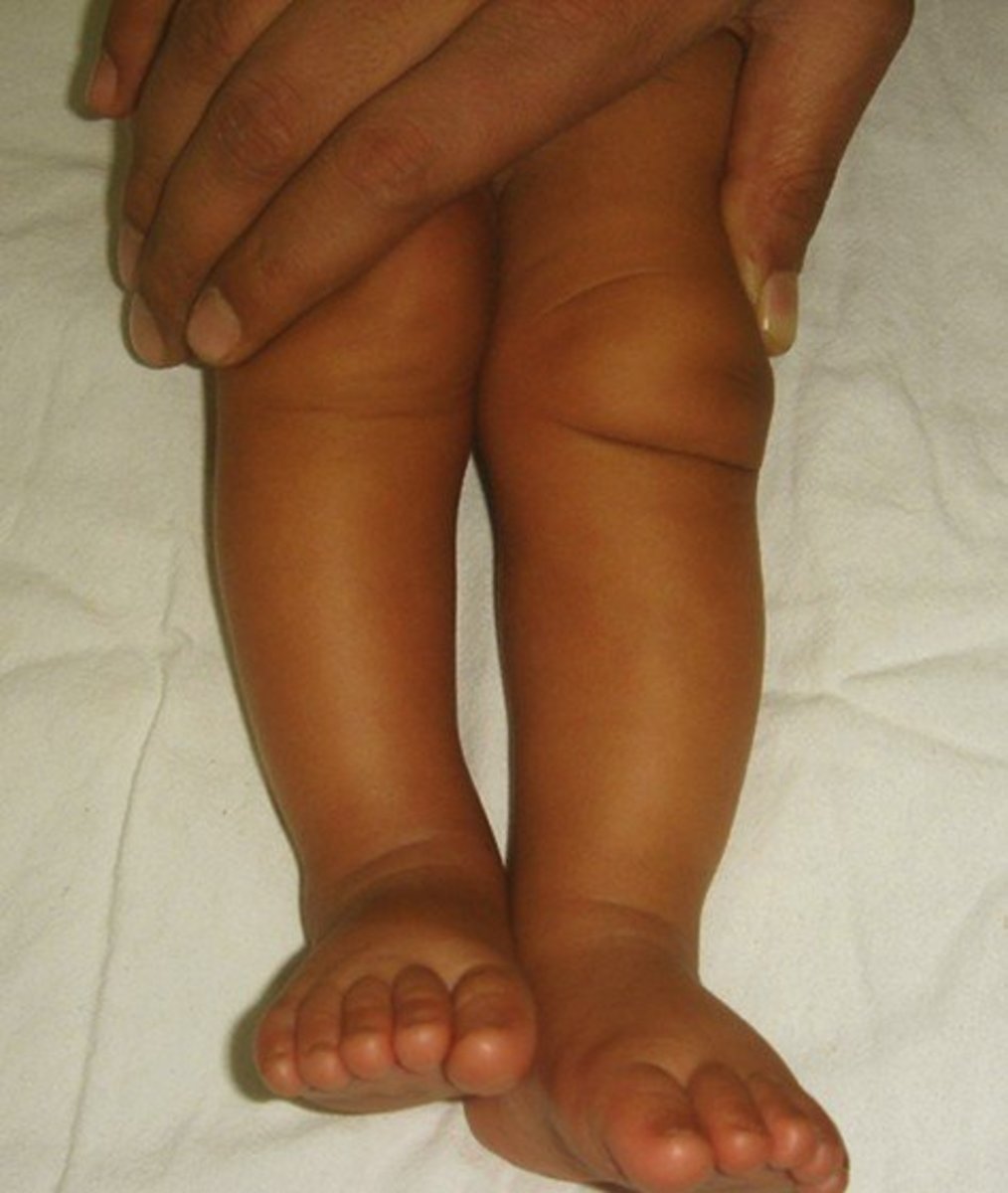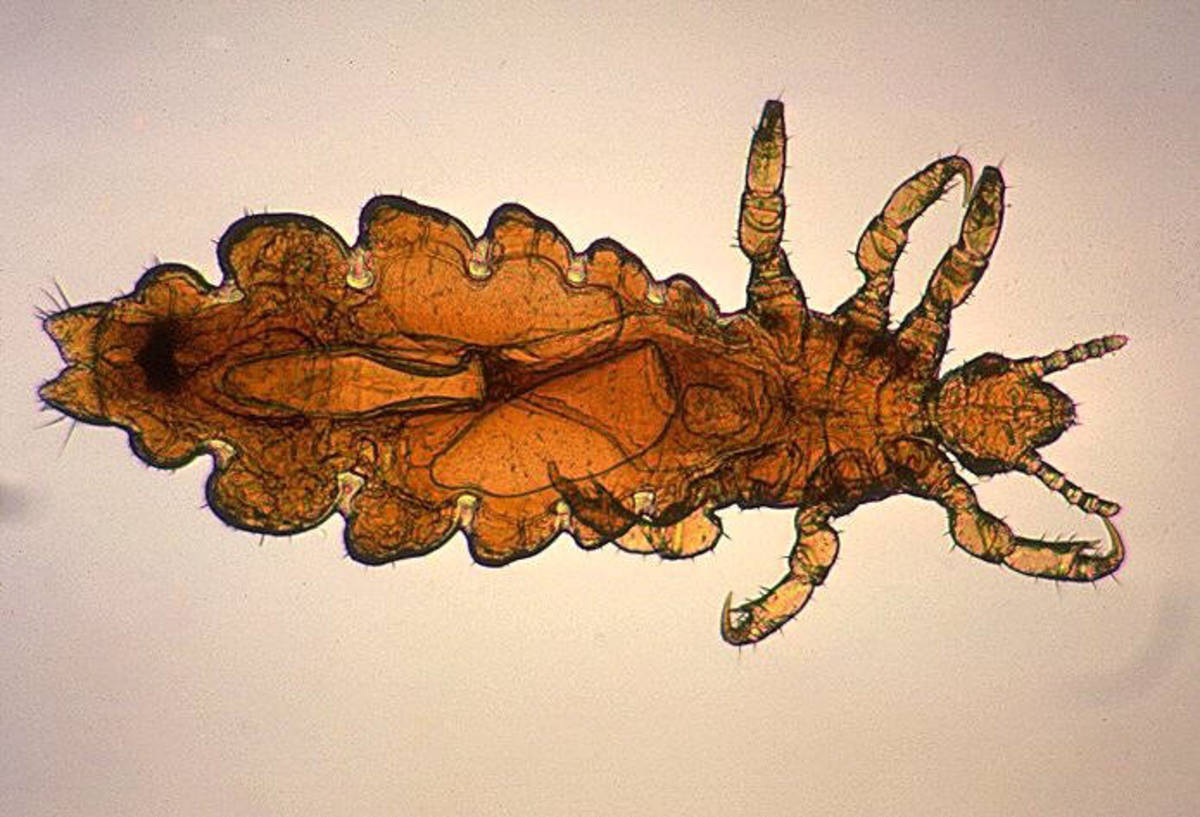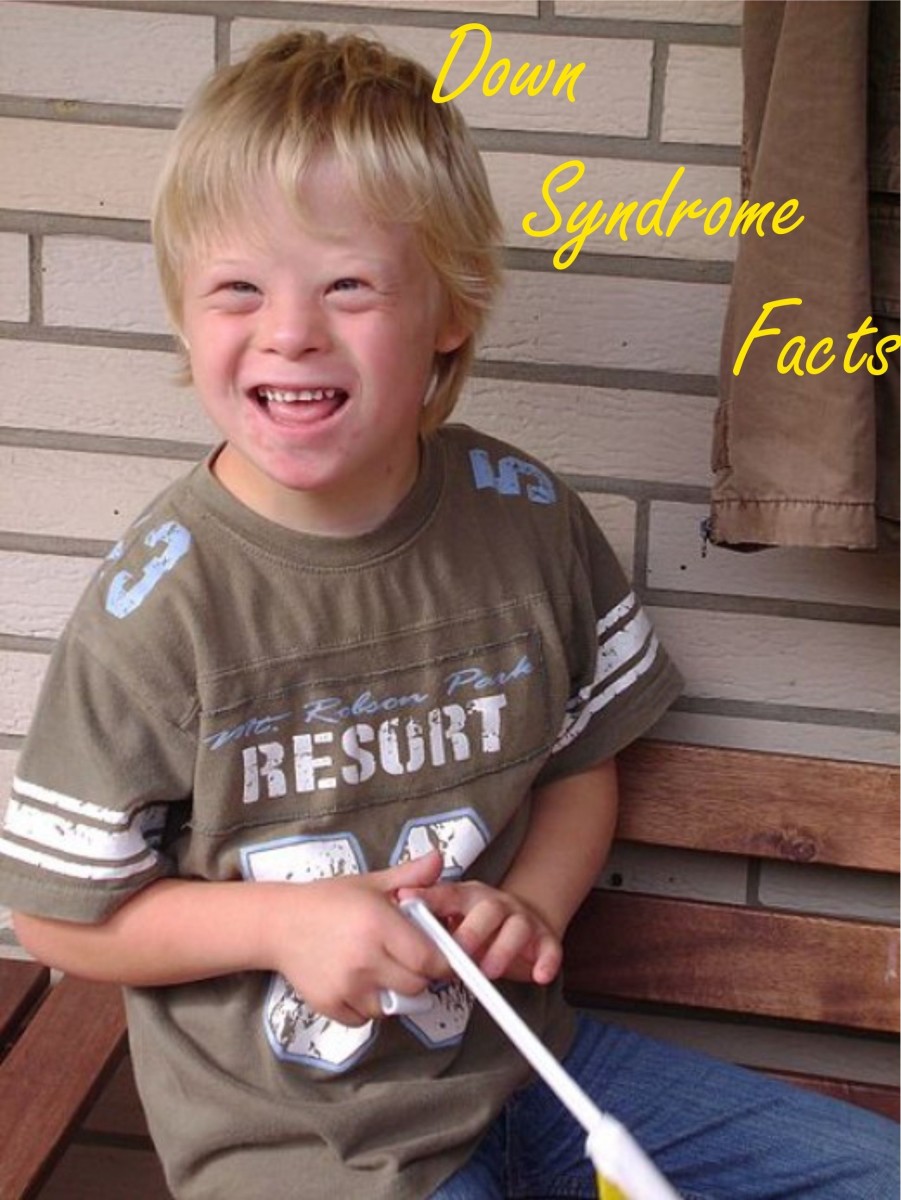Juvenile Rheumatoid Arthritis (JRA) or Juvenile Idiopathic Arthritis (JIA)
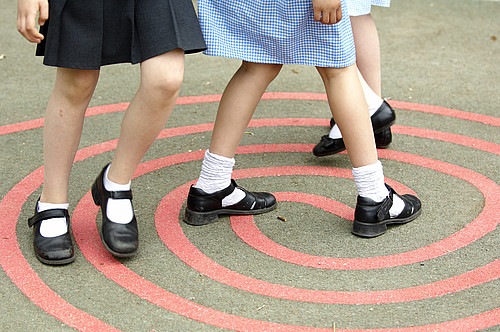
Arthritis
The word 'Arthritis' comes from the Greek word for joint (arthron) and the Latin (itis) meaning inflammation of the joint, a condition that affects people of all ages. Arthritis is a challenging inflammatory disorder that typically affects the joints to cause stiffness, swelling and loss of motion.
The term arthritis covers over 100 rheumatic diseases that may affect the joints and is the primary cause of disability in people over the age of fifty. However; this condition can also cause much suffering in many children and young adults.
Most of us accepts that as we age, we may have to deal with conditions such as arthritis, but it can be disconcerting and upsetting to think of children suffering from what is most often seen as an old person's disease. But arthritis in children is different to that of adults that last a lifetime.
When arthritis develops in children under the age of 16 years, it is known as Juvenile Idiopathic Arthritis (JIA), formerly referred to as Juvenile Rheumatoid Arthritis (JRA) or Still's Disease.
Both JIA and JRA are classification system for chronic arthritis in children. JIA is the most widely accepted term to describe different types of chronic arthritis in children, and is subsequently divided into several subtypes, each having characteristic symptoms
JIA is the most common form of arthritis in children and adolescents, affecting 1 in 1000. It is defined as inflammation of one or more joints over a period of at least six continuous weeks in a child under the age of 16 years, in whom other known causes of arthritis have been excluded.
Unlike arthritis in adults, JIA sometimes goes away by the time the child grows up. However; If the condition remain untreated, the inflammation process can potentially harm bone development in growing children. This is why early diagnosis and aggressive treatment is imperative.
Although JIA can involve internal organs, it typically affects the large joints and can occur in any joint to cause inflammation, swelling, stiffness, pain and in some cases bone retardation which can have a detrimental impact on growth.
JIA affects around 12,000 to 15,000 children under 16 years of age in the UK. According to a report from the National Arthritis Data Workgroup, around 294,000 children under the age of 18 in the US are affected by juvenile arthritis and other rheumatic condition. It is one of the most common childhood diseases in the US, costing almost $128 billion per year in medical care and other indirect expenses, like loss of wages and productivity.
Cause of Juvenile Idiopathic Arthritis (JIA)
Some forms of JIA are caused by an autoimmune disorder that develops when the body mistakenly identifies some of its healthy cells and tissues as foreign and launches an attack against them.
The immune system normally functions as the body's defence mechanism; it fights off harmful foreign substances like bacteria and viruses. The experts do not yet fully understand why in autoimmune disorders, the immune system goes awry to fight healthy tissues.
However; not all JIA are autoimmune, the cause of most types of Juvenile arthritis (JA) are unknown, but scientists believe that the condition may be caused by a two-step process, involving genetics and environment.
Researchers suspect that there may be aspects of some children's genetic makeup that causes them to be susceptible to developing the condition. An environmental factor such as a virus can then trigger the development of Juvenile Arthritis.
The study shows that families and relatives of children with Juvenile arthritis are three times more likely to have a member with an autoimmune disorder than are families of children without juvenile arthritis. Families are thought to share genes that cause them to be susceptible to autoimmune diseases.
Types of Juvenile Arthritis:
-
Polyarthritis (formerly Polyarticular juvenile rheumatoid arthritis) is the second most common type of JIA, it usually starts early, before the age of seven or in later childhood. This type of JIA often affects five or more joints during the first six months of the condition. It is more common in girls than boys and occurs primarily in the joints of the hips, knees, wrists, fingers, toes, ankles and the neck and jaw.
The condition may start suddenly or develop slowly, gradually involving other joints over a period of time; it can occur in the same joints on both sides of the body. Polyarthritis is present in 30-40% of children with JIA,
-
Oligoarthritis (previously known as Pauciarticular Juvenile Arthritis). This joint condition is the most common type of JIA. It affects four or fewer joints in the body during the first six months of the condition. Most commonly occurs in the large joints of the knees, ankles or wrists, and often affect a joint on one side of the body only, particularly the knee, rarely the hip. This type of juvenile arthritis may cause eye inflammation like uveitis that happens in about 20% of cases and seen more frequently in young girls with positive antinuclear antibodies (ANA). Oligoarthritis have a good recovery rate; long-term effects are rare.
-
Systemic arthritis also known as Systemic Onset Juvenile Arthritis, (SoJIA) accounts for 10% of JIA. It affects boys and girls equally; arthritis may begin with or precede by, high spikes in body temperature with a fever of 103 degrees or more elevated for at least two weeks, and in some cases months.
Children with SoJIA continue to have active arthritis for about 5-10 years after the initial diagnosis and have the most severe outcome. The long term disability correlates directly with the duration of active disease.
There is also enlargement of lymph nodes, enlarged liver or spleen with inflammation of the lining of heart and lungs.
There may be evidence of the characteristic rheumatoid rash, of flat, pale pink spots that does not itch generally. It may appear for minutes or a few hours on the child's chest and thighs then disappear. It may also move from one part of the body to another. Arthritis occurs in the small joints of the hands, wrist, knees and ankles.
-
Juvenile Spondyloarthropies, (ankylosing spondylitis, seronegative enthesopathy and arthropathy syndrome) are a group of conditions which involves the spine and joints of the lower extremities, most commonly found in the hips and knees.
-
Juvenile Psoriatic Arthritis, this is a type of arthritis that affects both boys and girls and is often associated with the skin condition psoriasis.
-
Juvenile Dermatomyositis, an inflammatory disorder that causes muscle weakness with a characteristic skin rash on the eyelids.
-
Juvenile Systemic Lupus Erythematosus, an autoimmune disease that causes skin rashes, arthritis, pleurisy, kidney disease and neurological involvement.
-
Juvenile Vasculitis, is inflammation of the blood vessels, this condition can be both primary childhood disease and a feature of other syndromes, which includes, dermatomyositis and systemic lupus erythematosus.
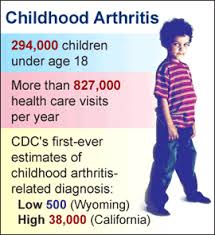
Diagnosis
Arthritis in children can prove difficult to diagnose, some children may not complain of pain, and the joint swelling may not be obvious in the initial stages.
Diagnosis of JIA is primarily done on physical examination and from the patient's history. However; some tests can help to support the suspicion of JIA.
Tests include:
- Rheumatoid factors, types of antibodies present in 70% to 90% of people with rheumatoid arthritis. But rheumatoid factor can also be found in individuals who do not have rheumatoid arthritis or those with other autoimmune diseases. When no rheumatoid factor is present in someone with rheumatoid arthritis, the disease tends to be less severe.
- Anti-CCP or anti-cyclic citrullinated peptide is a test that measures levels of antibodies that bind citrulline-modified proteins found in people with rheumatoid arthritis. The presence of anti-CCP antibodies can be used to predict the people with rheumatoid arthritis who will get a more severe condition.
- ESR is used to detect the presence and degree of inflammation in the body. ESR is low in a healthy person but is elevated in the presence of inflammation. It will not indicate a particular disease, but will give a general indication of the degree of inflammation in the body.
- C-reactive protein (CRP) a blood test that measure levels of general inflammation in the body
- Anti-nuclear antibody (ANA) are proteins produced by the immune system of people with autoimmune diseases.
- X-rays will help to exclude fracture, cancer or infection as the cause of joint pain.
- MRI or Ultrasound can contribute to provide evidence of early joint changes that should alert radiologist and rheumatologist to a possible diagnosis of JIA. It can ensure early and aggressive therapy to prevent irreversible damage, ensuring improved outcome.
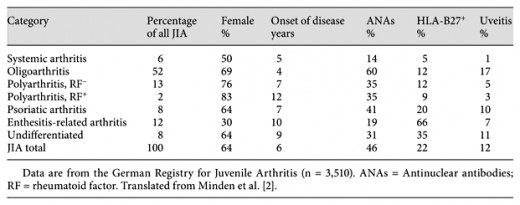
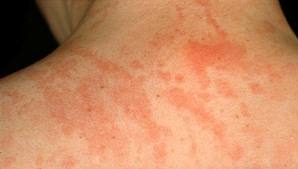
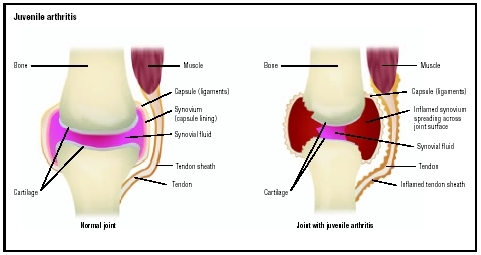
Typical Symptoms and findings of Children with JIA Include:
-
Inflammation for at least six weeks before diagnosis
- Complaints of joint pain
-
Joint contracture from holding painful joint in flexed position
-
Evanescent rash on the trunk and extremities
-
Psoriasis, or other subtle skin conditions
-
Damage to joint cartilage and bone, leading to joint deformity
-
Limping
-
Stiffness on awakening
-
Reluctant to use an arm or leg
-
Reduced levels of activity
-
Persistent fever, occurring once or twice daily at around the same time of the day
-
Swelling of joints
- Difficulty with fine motor activities
- Inflammation of the eye (Uveitis or Iritis)
- Flare, when symptoms get worse
- Remissions, periods when symptoms are improved or disappears
There are other conditions that present similarly to JIA, and should be ruled out before the diagnosis of JIA is made, they include:
-
Infections
-
Childhood cancer
-
Bone disorders
-
Lyme disease
-
Lupus
Treatment for JIA
Arthritis in children is a sad reality, but unfortunately, not new. Painful inflammatory joints in children have been documented by physicians as far back as the 1800s. The primary goal in the management of JIA is to prevent or control joint damage, to decrease pain and to maintain high levels of functioning to maintain a good quality of life.
There is currently more effective treatment for JIA than ever before. New therapies can help to control inflammation and preserve joints in a large majority of children, allowing them to live normal lives.
Treatment include:
Medication
Nonsteroidal anti-inflammatory drugs (NSAIDs)
Disease-modifying antirheumatic drugs (DMARDs)
Corticosteroids
Biologic agents (a variety of new drugs that can mimic naturally occurring biological chemicals in the body that block cytokines ( cytokines are diverse chemical, some of which contributes towards inflammation).
None medication treatment include:
Physical therapy
Although there isn't a definitive cure for JIA, early diagnosis and treatment can ensure a good outcome. Pain can often limit physical activity but exercise is vital, it can help to reduce symptoms and maintain function and range of motion of the joints.
However, during a 'flare' of the condition, the doctor may recommend a reduction in activities, depending on the joints involved. Regular activity may be resumed once the flare is over.
Complementary and alternative therapies
Research shows that an increasing number of children are now using alternative and complementary therapies in the treatment and management of JIA, they include:
Special diets, supplements like Omega-3 fatty acids, massage, acupuncture and magnetic jewelry.
There is little research to support alternative treatment, but some people find it invaluable. However, all treatment should be discussed with the doctor.
Care is given by a multidisciplinary team that may include:
- Physiotherapist
- Occupational therapist
- Counselor or Psychologist
- Ophthalmologist
- Dentist and Orthodontist
- Dietitian
- Social worker
- School and rheumatology nurse
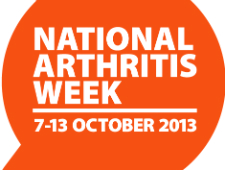
Conclusion
With the help of charities like Arthritis Research Uk, there has been many improvement in the treatment and understanding of JIA and other forms of arthritis. With each breakthrough comes more understanding, more effective treatment and the possibility of a cure getting that much closer.
As National Arthritis week comes to a close, there is still a need to keep up the momentum by spreading the word to raise awareness about this painful inflammatory condition. Arthritis is the biggest cause of pain and disability in the UK, costing the NHS around £5 billion every year.
People who are directly affected by arthritis can share personal experiences; this is an excellent way to help raise awareness and inspire others.
This article is for information purpose only; it is not intended to be used instead of medical advice. Contact your pediatrician or healthcare provider if you have concerns about Juvenile Arthritis.



